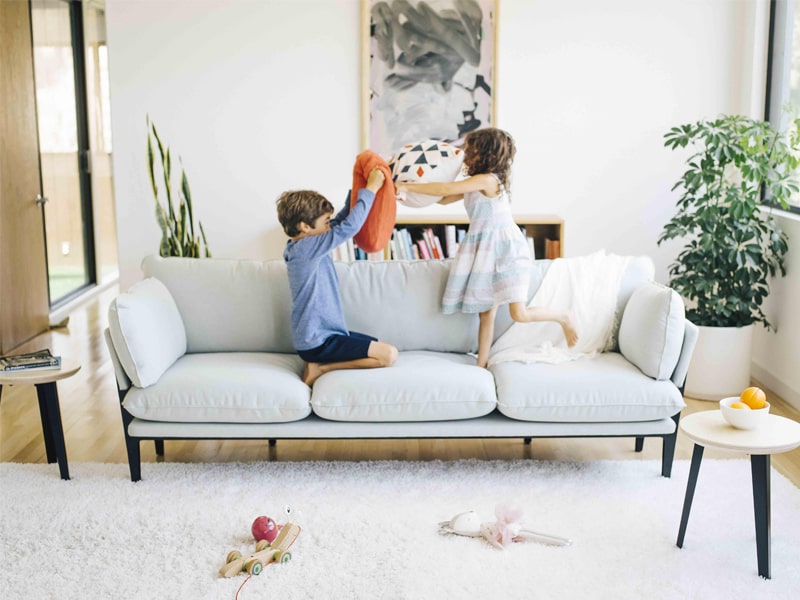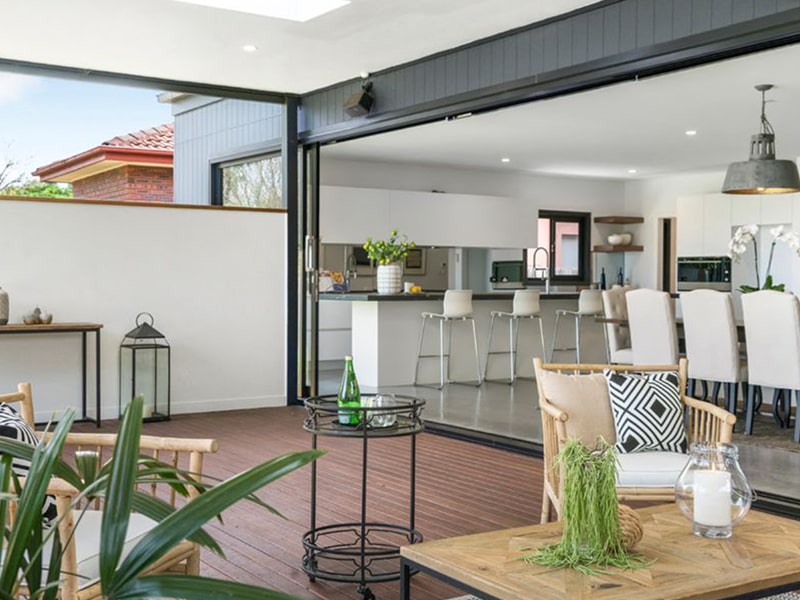Interior Design

Modern is a broad term in design that generally refers to a house with clean, clear lines, a simple colour palette and the use of materials that may include metal, glass and steel.
Modern design creates a sense of simplicity in every element, including furniture. The word that is commonly used to describe modern style is smooth.
Contemporaries
Modern interior for a comfortable life – this is the definition of the exact meaning of the style of Contemporary. It appeared in the 60s of the twentieth century on the basis of the Scandinavian style for the purpose of production of furniture and household items that would be distinguished by convenience, accessibility and functionality.
Furniture designers of those times were guided by idea of creation of qualitative subjects with high technical indicators, but with a touch of elegance.
And at a time when people with enough income in the interiors of their homes followed the traditional, sometimes pathos canons, the bulk of the population was forced to adapt small apartments to modern lifestyles.
Many people think that the interior style of contemporary and modern is the same. In fact, these words are not synonyms. Modern originated at the dawn of the twentieth century, and it has more stringent rules. Unlike modern, Contemporary is a more volatile style, in which the violation of rules is considered the norm.
Minimalism
Minimalism accepts the concepts of modern design and simplifies them further. The colour palette is neutral and airy. The environment is simple and streamlined and nothing is excessive or bright in accessories or decoration.
Minimalism is ultimately determined by a sense of functionality and ultra-clean lines.
Industrial or loft.
Industrial style, as the name suggests, draws inspiration from the warehouse or city attic.
There is a feeling of unfinished humidity in many elements and it is not uncommon to see untreated bricks, gas ducts and wood.
Imagine high ceilings, old beams and suspended metal fixtures with functional furniture. In such an interior, it is possible that there may be one or two abstract art paintings or photographs to add a space of color, otherwise everything will be in a neutral color gamut, derived from the primary materials of wood and metals.
Mid Septzgu Modern.
Mid Septzgu Modern refers to the design style of the mid-1900s-1950s, primarily, and the 60s. The style was a nostalgia for retro design, as well as some elements of minimalism. Functionality became the main theme for the design of the middle of the last century.
Emphasis was placed on cut, natural or organic shapes such as egg-shaped chairs, easy to use modern designs and easy to produce. It easily complements any interior, and also helps in a smooth transition from interior to exterior.
Scandinavian.
Scandinavian style pays tribute to the simplicity of life, which is characteristic of the Nordic countries. Furniture design often creates a sense of art, despite its simplicity. In addition to the functionality of the furniture, there are interesting objects in the interior, many of which have a sculptural influence.
Other general characteristics include all white colour palettes and the inclusion of natural elements such as pressed wood, plastics, bright aluminium, steel and wide board decking. If there are color inclusions, this is often at the expense of artwork. The use of fur, for example in the form of hides, is also characteristic.

The main characteristics of this style – space, natural lighting, lack of a large number of accessories and functional furniture.
Traditional or classic.
The traditional design style offers classic details, great ambience and an abundance of accessories. It originates in Europe.
Dark, lacquered trees, rich colour palettes and a variety of textures and curves are often used in traditional home decoration. The furnishings have complex and rich details and fabrics such as velvet, silk and brocade.
Transitional or transitional.
Transient is a very popular style because it borrows elements of both traditional and modern design. This style is used to lighten the space that is not “too much” in terms of style. It has a sense of balance, which is attractive and unexpected for most admirers.
The Transitional style can include modern materials such as steel and glass, and then combine them with plush furniture.
Transitional design also includes a relatively neutral colour palette, creating a soothing and relaxing space that creates a sense of style.
French country.
Warm, earthy colours testify to the style of French country design, as well as decorative wooden furniture. The style creates the feeling of a country house or a country house.
French country music can include soft and warm tones of red, yellow or gold and natural materials such as stone and brick. Also this interior is characterized by collections of decorative porcelain dishes and massive bed linen with a blanket.
Bohemian.
Bohemian is a popular style for home design and fashion. It reflects a carefree lifestyle with small rules.
Bohemian homes can include vintage furniture and lamps, an abundance of textiles and carpets, various collections, as well as items found in a variety of sources, including flea markets during their travels.
Floor cushions and comfortable seats can be found in this style. This eclectic style may include ultra-glamorous chandeliers along with an old, trampled carpet and medieval chairs. In bohemian style, everything seems to be on its own, where everything goes the way you like it.
Rustic or rural.
Rural design is taken from natural inspiration, using raw materials and often unfinished elements, including wood and stone.
It can combine accessories from a design that is used outdoors, such as in a pergola. It is characterized by vaulted ceilings decorated with wooden beams and wooden floors.
Many structures are now being integrated in a rustic style with more modern furniture and accessories.
Shabby chic.
Shabby Chic is inspired by retro, but tends to be more feminine, softer and gentle than bohemian and similar styles.
Shabby chic furniture is often worn with abrasions, as if the paint has been applied since antiquity. Color palettes include white, cream and pastel tones. Light fixtures and tapestries can complement and richly decorate the interior, giving it tenderness and femininity.
Hollywood glamour.
Also referred to as Hollywood Regency. Hollywood glamour is a design style that tends to be luxurious. It is a dramatic design style, ideal for a homeowner who likes to challenge others.
This style may include some features of Victorian design, including plush, velvet furniture and antiques. The color palettes are especially saturated with purple red and turquoise.
Coastal.
The coastal style is the style of the beach house. Not an expensive villa or mansion, but a small house, perfectly embodying the modest charm of the bourgeoisie.
The style was also called Hamptons style. Common features include light, airy colour palettes with cool neutral shades of blue and green. The furniture is often white or beige. The room can contain elements of wood and accessories inspired by the sea.
Blue and white striped cushions, large windows, white teddy sofas and white painted wood are also features of the classic coastal style.
The challenge is to create a relaxed and comfortable environment that is inspired by the beach and ocean.
